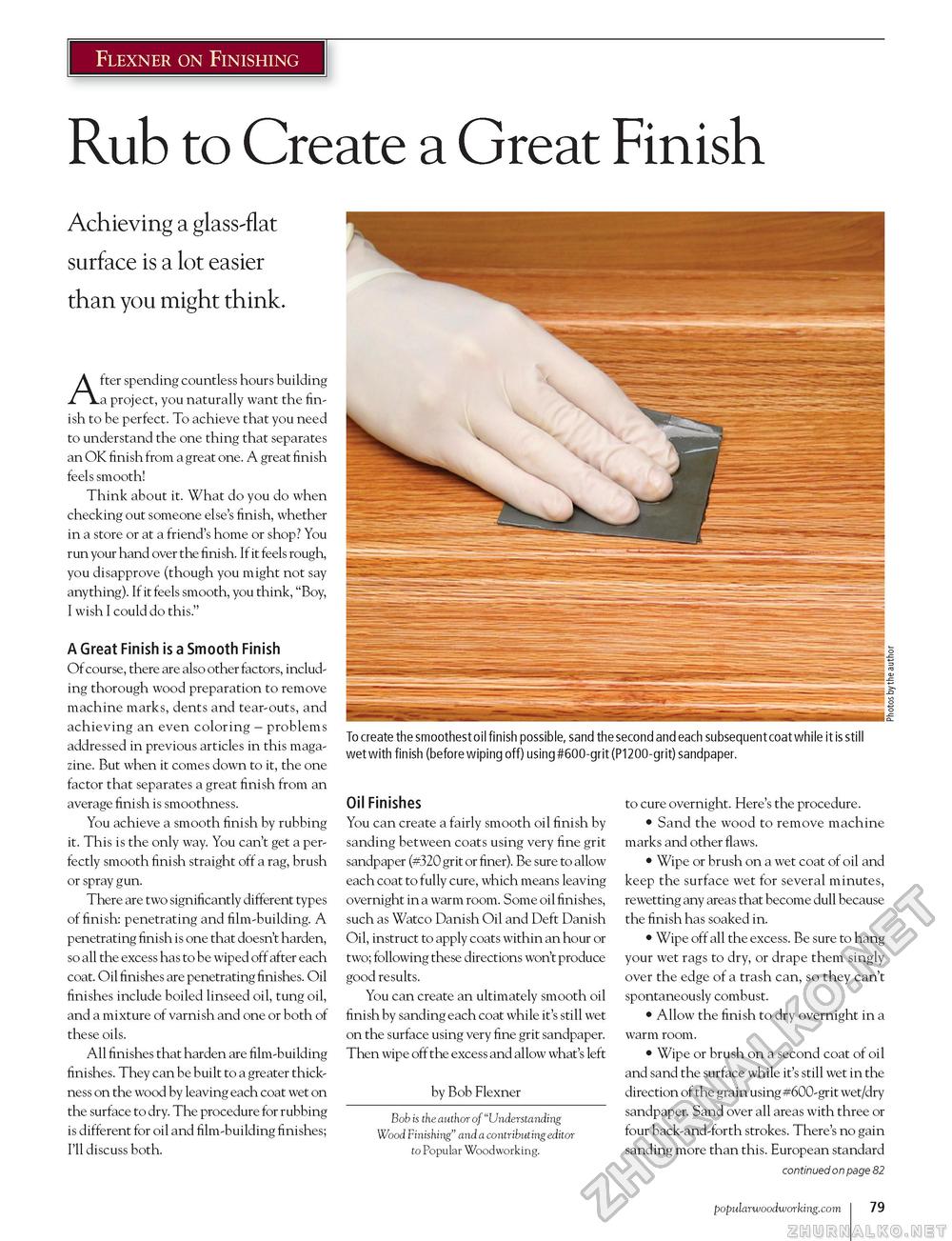Popular Woodworking 2006-08 № 156, страница 81
Flexner on Finishing Rub to Create a Great Finish Achieving a glass-flat surface is a lot easier than you might think. After spending countless hours building a project, you naturally want the finish to be perfect. To achieve that you need to understand the one thing that separates an OK finish from a great one. A great finish feels smooth! Think about it. What do you do when checking out someone else's finish, whether in a store or at a friend's home or shop? You run your hand over the finish. If it feels rough, you disapprove (though you might not say anything). If it feels smooth, you think, "Boy, I wish I could do this." A Great Finish is a Smooth Finish Of course, there are also other factors, including thorough wood preparation to remove machine marks, dents and tear-outs, and achieving an even coloring - problems addressed in previous articles in this magazine. But when it comes down to it, the one factor that separates a great finish from an average finish is smoothness. You achieve a smooth finish by rubbing it. This is the only way. You can't get a perfectly smooth finish straight off a rag, brush or spray gun. There are two significantly different types of finish: penetrating and film-building. A penetrating finish is one that doesn't harden, so all the excess has to be wiped off after each coat. Oil finishes are penetrating finishes. Oil finishes include boiled linseed oil, tung oil, and a mixture of varnish and one or both of these oils. All finishes that harden are film-building finishes. They can be built to a greater thickness on the wood by leaving each coat wet on the surface to dry. The procedure for rubbing is different for oil and film-building finishes; I'll discuss both. To create the smoothest oil finish possible, sand the second and each subsequent coat while it is still wet with finish (before wiping off) using #600-grit (P1200-grit) sandpaper. Oil Finishes You can create a fairly smooth oil finish by sanding between coats using very fine grit sandpaper (#320 grit or finer). Be sure to allow each coat to fully cure, which means leaving overnight in a warm room. Some oil finishes, such as Watco Danish Oil and Deft Danish Oil, instruct to apply coats within an hour or two; following these directions won't produce good results. You can create an ultimately smooth oil finish by sanding each coat while it's still wet on the surface using very fine grit sandpaper. Then wipe off the excess and allow what's left by Bob Flexner Bob is the author of "Understanding Wood Finishing" and a contributing editor to Popular Woodworking. to cure overnight. Here's the procedure. • Sand the wood to remove machine marks and other flaws. • Wipe or brush on a wet coat of oil and keep the surface wet for several minutes, rewetting any areas that become dull because the finish has soaked in. • Wipe off all the excess. Be sure to hang your wet rags to dry, or drape them singly over the edge of a trash can, so they can't spontaneously combust. • Allow the finish to dry overnight in a warm room. • Wipe or brush on a second coat of oil and sand the surface while it's still wet in the direction of the grain using #600-grit wet/dry sandpaper. Sand over all areas with three or four back-and-forth strokes. There's no gain sanding more than this. European standard continued on page 82 popularwoodworking.com I 79 |








